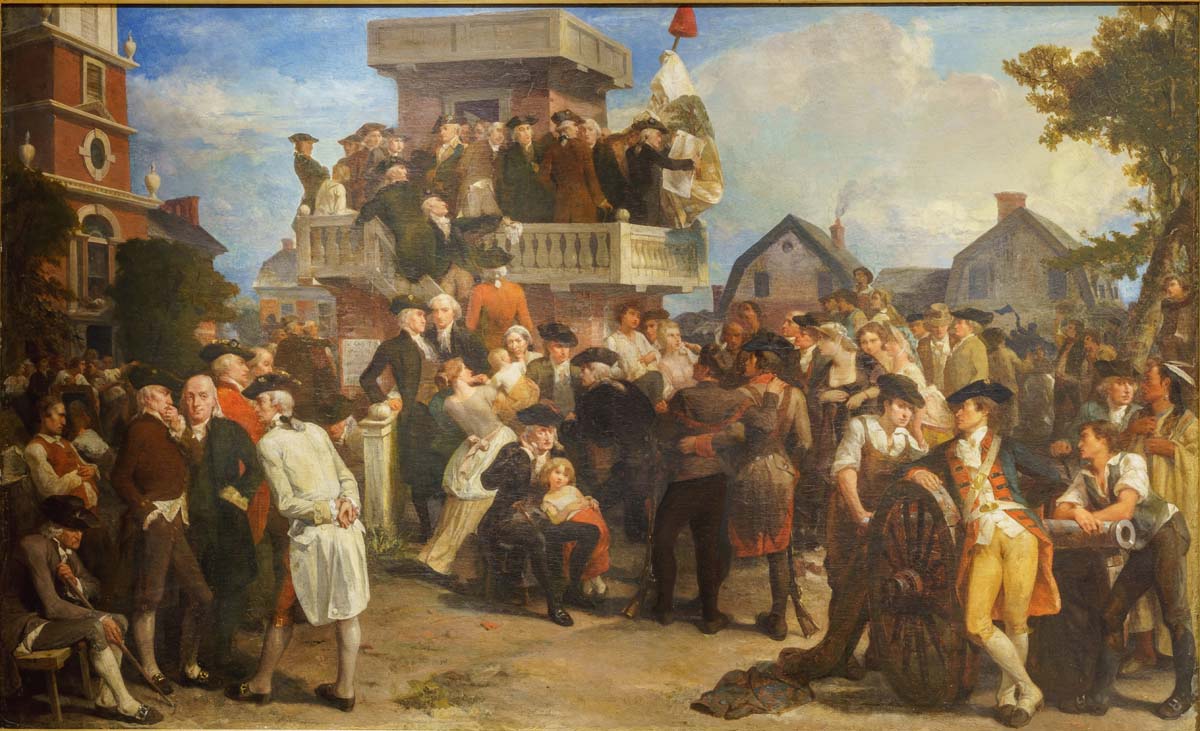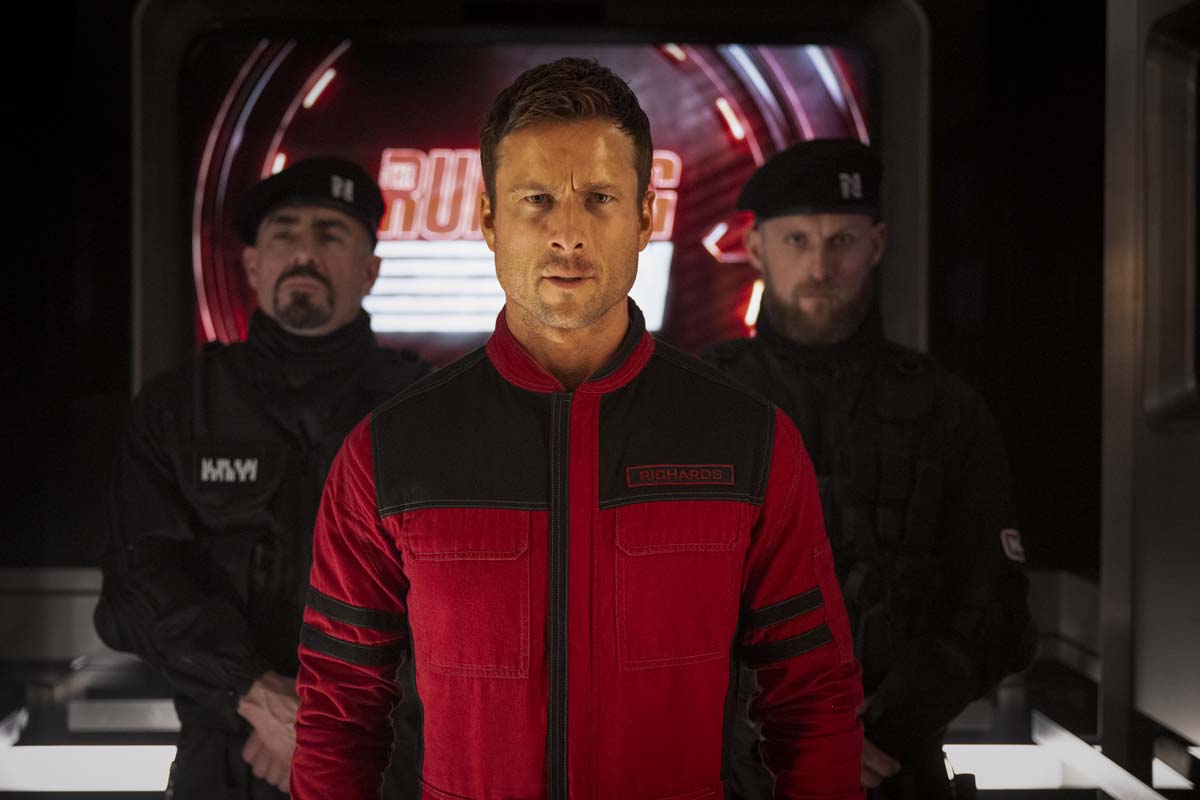Caught Stealing
A discussion of editing on-set, the benefits of having the editor speak into the script, and the dangers of reading the source material.
Today on Art of the Cut we speak with Oscar-nominated editor, Andrew Weisblum, ACE, about cutting Darren Aronofsky’s film, Caught Stealing.
Andrew’s been on Art of the Cut before to discuss The French Dispatch, Alice Through the Looking Glass, and tick, tick, BOOM! - for which he was nominated for an Oscar and won an ACE Eddie. He was also nominated for an Oscar for editing Black Swan. His other work includes Wolfs, The Whale, Mother, and Isle of Dogs.
Andrew, thank you so much for being on Art of the Cut. It’s nice to have you back again.
Thank you for having me again.
Let’s talk about the evolution of your collaboration and the fact that you’ve done these multiple films with director Darren Aronofsky, including The Whale and Black Swan and The Wrestler, but you were also the VFX editor on The Fountain. How did you make that transition from VFX into the editor’s chair?
I worked on The Fountain for over a year as the visual effects editor, and on a project like that you can’t help but be closely involved in the creative process, because there are so many visual effects involved in the storytelling. I was friends with Jay Rabinowitz and other people on the crew.
Jay was the editor.
Yes. He got me into that. When the time came for Darren to do The Wrestler, I don’t believe Jay was available. Darren had enjoyed his collaboration with me and offered me the gig, and the rest is history.
How has your collaboration changed or evolved over the course of those films?
It should be obvious that when you work with somebody like that for - 17 years or something, really longer if you count The Fountain - there’s undeniably a shorthand where we understand each other’s tastes and instincts and working methods, but I think that we have both grown up together and become maybe less precious about certain things and more open about certain things over time.
When we first started working together, our process was that he wanted to see my assembly - and he still does because it’s always informative to him to look at what he shot through somebody else’s eyes and understand what may be communicated and maybe isn’t, and he doesn’t like to preempt that with his own instructions. He wants to see what I’m going to try first, which is great. As a collaborator he’s very trusting.
But when we first started together, we would go through that process and he’d watch the assembly, and then pretty much we’d watch all the dailies together for the entire film, because then we could discuss and revisit and consider different options.
Now, over time, we do that less and less frequently - less comprehensively over the entire film - because he knows and trust that we have an understanding about what we’re going for with a performance or a scene or an intention or a beat.
He knows that I can read between the lines in terms of how he’s directing something, what’s important to him in a performance or in a moment.
Sometimes it’s discussed, sometimes it isn’t, but usually I can take the temperature, so he trusts that I will have found something that’s as close to that as possible, but sometimes if something else isn’t working for some reason - something about a performance or a nuance or where we want to take something, or what bit of information we want to communicate - then we’ll go back and watch the dailies and see how we can reinterpret or reinvent whatever was going on on the day to fit the direction the film’s going in.
So it’s less of a process of him having to learn that footage for himself because he knows what he shot. He knows that I will understand what he’s looking for. So he trusts that, I think.
The other part that has changed dramatically since we started working together is now we work a lot together on set. Particularly on a film like this that had a fairly compressed schedule and budget, but a lot of action and locations and logistical concerns and short periods with different actors and so forth.
I was doing a lot of Q-Take editing, whether I was actually physically on set or in the cutting room. I was always online with the shoot, and I was watching things, and we would regularly text, whether it was with Darren or Alexandra Torterotot, the script supervisor, depending on what was going on in the moment, I could always shoot a message to him. He could always send me a message, saying, “Watch this. Do you think I have this? What do you think I need?”
Almost every day I would get a text from him saying, “Can you slap this part together and send it to me and see if we got it or if we need something?” It was just kind of an insurance policy, but great ideas would come from that because we’re right there.
We’re on the set one in the day. I know what he’s going for. I slap it together, I send it to him and I say, “Do you think we need this kind of shot? Or this angle for this moment?
Or what’s the best way to reveal this information if it’s not quite landing the way we expected?” That collaboration is ongoing during the shoot, so it means we don’t have to come back.
Can you explain - for somebody who has not used the Qtake system - what Qtake is and what it means to “Qtake edit” on set? (qtakehd.com)
It’s basically what was known as the video tap, back in the day, but when we shoot digitally it’s monitoring the footage live creating an instant Quicktime of every shot.
The Qtake system uploads each take as it’s being shot onto a server in a small proxy format, which then is immediately downloaded onto a drive wherever I am. So I immediately have access to media to be able to edit. It’s the same files that they use for playback on set if they want to review a take.
There was a very involved sequence in Flushing Meadows, which was not really a practical place to sit and edit, but I was online with them all the time while they were shooting and regularly giving feedback on how I thought they might cover something, or how to patch a certain bit of action or how to improve on something.
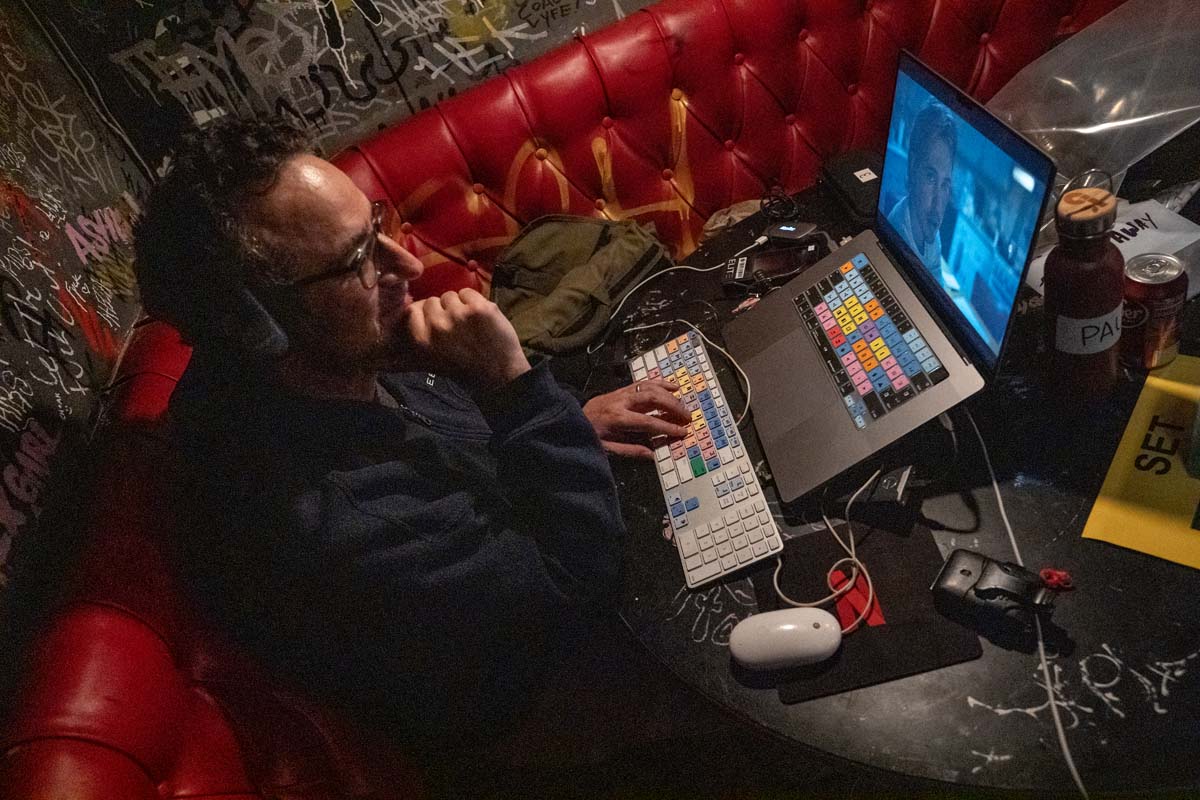
Editor Andrew Weisblum, ACE, editing on the set of Caught Stealing.
Were you ever on set sitting there in video village?
Yes. About a third of the time I would be on set for various things. If Darren had a specific concern that he wanted to figure out because there would be a lot of moving parts, I’d be on set.
This one sequence - which we’ll call the binge the drinking binge sequence – was a series of shots that are a repeated move. It’s just a series of long pullbacks, but we didn’t have a repeatable (automated camera head).
Because there are different variables in terms of what’s in the frame or how close or far we are from the subject, the speeds are different, but he wanted it to feel like one continuous move. So there were two pretty long nights where we were doing that series of shots.
When we thought we had a take that was right, I would cut it in right away to make sure that we had matched the speeds. I would also look at the different takes as we were getting up to what was working, as he was working on blocking issues to help figure out the speed differentials.
Then there was another sequence in Paul’s bar - which is where the character Hank works - that’s a very complicated action sequence with several actors in it - some more technically prepared than others in terms of stunts and other things that had to happen.
I was editing that on the fly while we were shooting it. With Darren and [cinematographer Matthew Libatique] we were able to figure out how we would reveal certain bits of information that would become a surprise and how to work around the room so we understood what was happening the whole time.
The movie is based on a book. Did you read the book before editing began?
No, I did not read the book. I thought about it and decided the film’s not being made exclusively for people who are aficionados of the book. I want the story to be clear for people who didn’t read the book. Charlie Huston, who wrote the book, also wrote the screenplay.
He used the book as a jumping off point, but there were a lot of changes. I thought it would be a hindrance, in a way, for me to read the book. I didn’t need to know the backstory.
I needed to keep my objectivity as much as possible. I didn’t want to subconsciously rely on information that I had from the book that maybe wasn’t being conveyed in the movie. The story needed to stand alone. We were changing it.
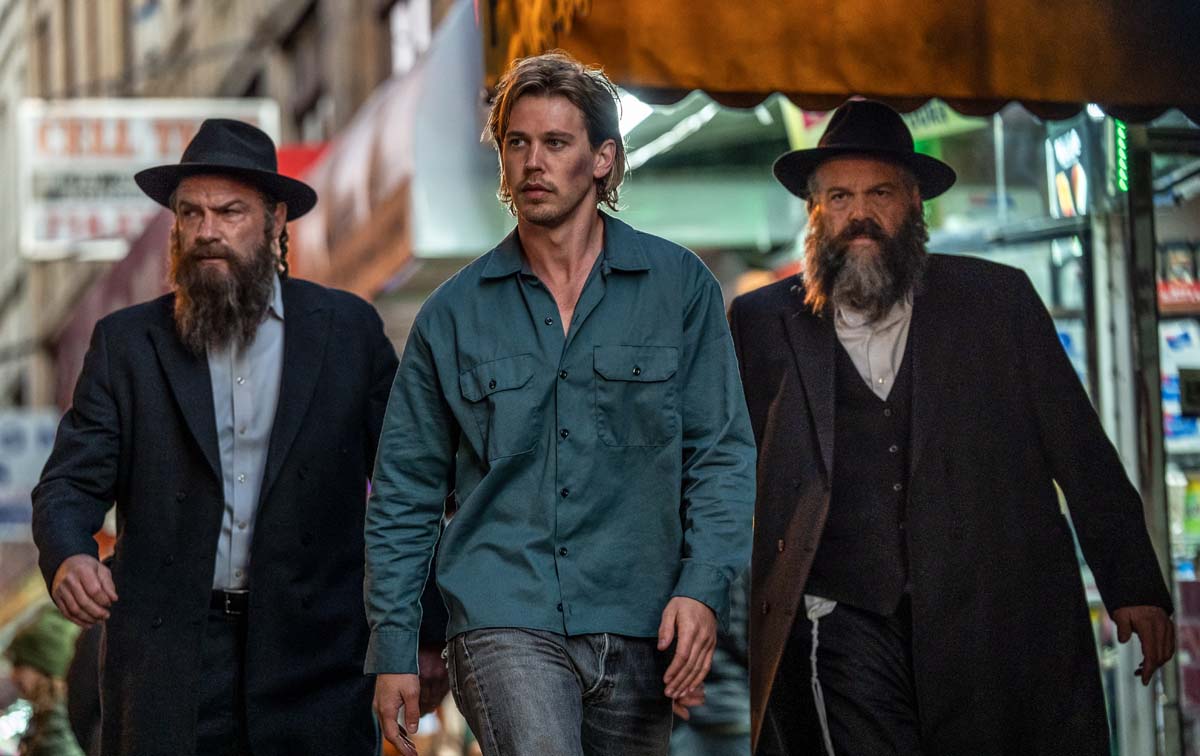
I’ve worked on a bunch of projects that are based on source material - some more well-known than others. Right now I’m working on a film that the source material is very well known. Once again, I’m choosing not to refer back to that material because we’re doing our own take on it.
I think that’s been true pretty much every time - to not treat any material, even the script, as sacrosanct - because you have to listen to the movie, listen to the footage, listen to the performances, and be open to rewrite or rethink things that aren’t 100% what they need to be.
As a longtime collaborator of Darren’s did you get to speak into the script at all?
Yes. He’s very inviting amongst the collaborators that he’s worked with over the years - and new ones. I was very busy on another film when the time came for me to start to pay attention.
They were a few weeks out and I read the script again. I had read it kind of peripherally. I knew I was going to do the film because Darren and I have a trust.
I read the script and I saw a number of big questions, so I wrote a fairly long outline of the things that I saw that needed to change and develop, and immediately Darren called a meeting with the writer, the producers, and me.
We sat down for a whole day and hashed out all of the things that I brought to light. Obviously, one of the benefits of that is that I hadn’t been involved in the whole writing process and development process. It’s easy to lose the thread of the plot of why something was the way it was in the first place if you’re so immersed in it.
Just as it’s helpful for me when we’re editing to show the film to people who are unfamiliar with the story or the characters and are completely uninitiated, you immediately learn something new about how they react, or they raise a question that never occurred to you.
So I was kind of that voice in that process. There were some substantial changes that happened in that period, not because I’m some kind of genius, but because I was not in it the way they were.
I think in the end, the script and the story is actually quite tight in terms of ideas that gets seeded and resolved as the film develops and paid off in ways for a very complicated narrative. There were definitely some “hanging chads” in there when I walked in the room because it was in the middle of that process.
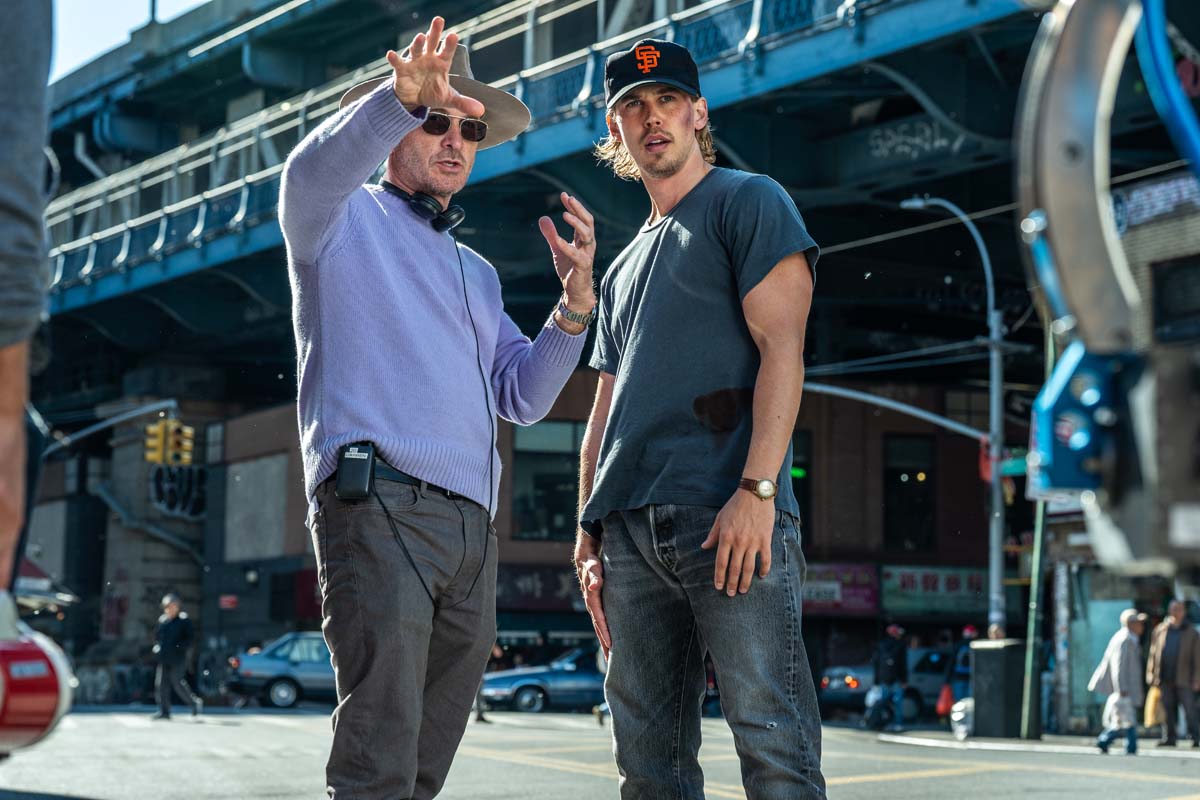
Did you have any discussion with him before shooting about tone or style or intention or any of that, or did he just want your take fresh?
I think we had some discussion at the beginning, certainly through the rest of the process, what the tonal balance of the film would be and actually whether there needed to be a tonal balance, meaning we knew from working on a film like Black Swan, that a movie like that can be both terrifying and funny, and those things can live side by side, and it doesn’t have to fit a narrow column or a box.
So I think we knew that there was comedy in the movie or at least humor in the movie, but the story had a lot of serious issues and darkness and addiction and trauma and all sorts of issues like that, that we had to be aware of.
Darren and I were very direct about the fact that we didn’t want this to be a probing drama in the way that you might consider The Whale.
If we wanted it to be lighter than that, because we knew that the more intense those things got, or the more we dwelled on those things, the harder swing it would be to get to the humor.
And we wanted people to kind of be in a zone where the right turns and left turns weren’t that hard and leave some oxygen for that.
I don’t think we thought of it so much as a comedy, but more of a thriller or drama with some comedic elements until we started shooting it and then we started to realize there was a lot of humor in there.
Darren is a very funny person to me. I think people know him, find him very humorous, and I think ever since The Wrestler, when we would screen it and I would hear this tremendous laughter for the comic relief, every time we talked about whatever he was going to do next, I would always say to him, “When’s your next comedy?
When are you doing your dark comedy?” After Hours was always the reference. I think it was the first week of the shoot where I turned to Darren and said, “Oh, we’re doing the comedy! It’s a bit of a Trojan horse, but it’s all here.”
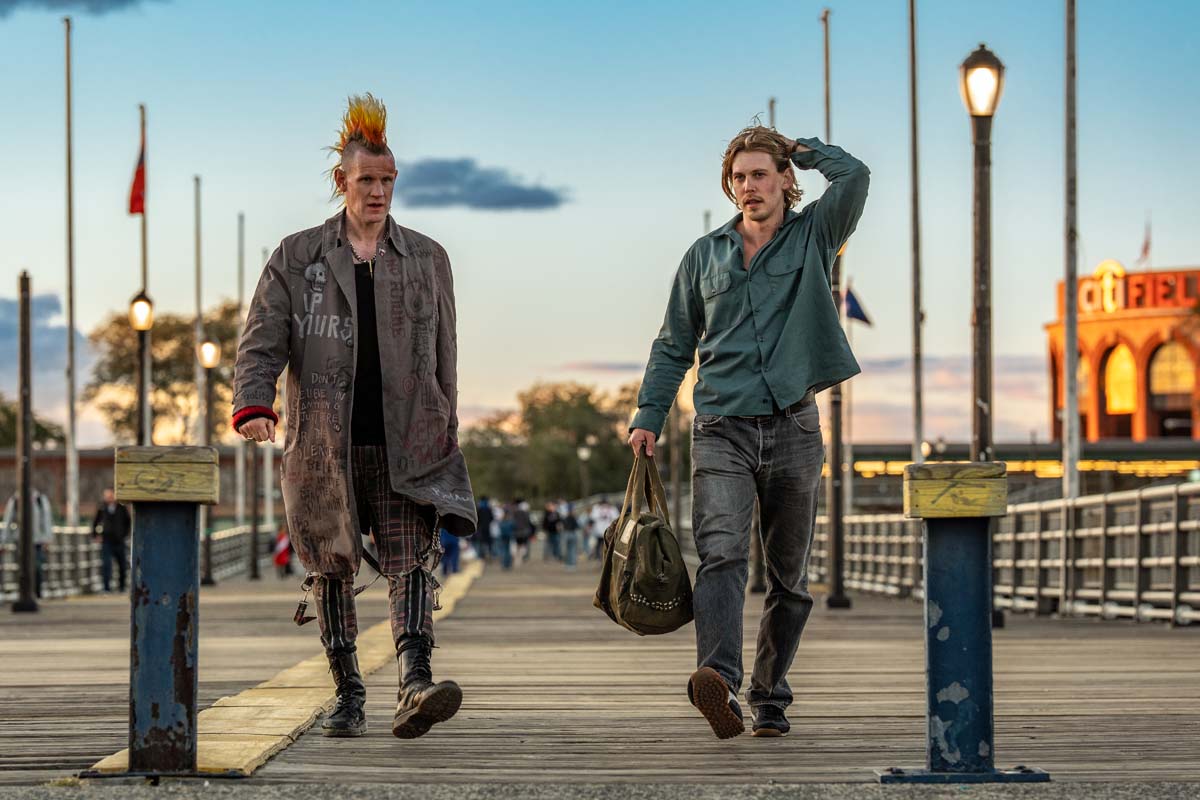
There’s great tension throughout the film. How were you enhancing or supporting that through editorial? Maybe if you could give some examples?
Darren is very conscious of subjectivity and first-person storytelling. I think with the exception of Noah - which has more than one point of view - all the films that we’ve done together are very tight to a person’s point of view - learning information through them as an individual - that seems to be a hallmark of our films.
In a funny way, even though it’s less, impressionistic in its style and it’s not a heavy-handed stylization like Mother was, this movie is also very first person.
I don’t think there are only more than one or one and a half moments - not even full scenes in this film- that don’t involve Hank, the main character, where you don’t learn information through him.
Just one tiny moment in a nightclub and one brief conversation in a bar that he’s not present for, otherwise, the whole movie is directly through his ears and eyes.
Tension in storytelling and drama requires that you align with someone’s point of view or perspective, and you experience the thing with them inherently. That was always the question: Does Hank know the thing that we want to know? Are we aligned with him?
And I think that helps the tension. There were a few moments in the script that I noted broke our alignment with his point of view, where we had information that he didn’t seem to have.
And in the editing process, those were very important moments to try and solve because of the plot machinations, it sort of made sense that he didn’t know those things.
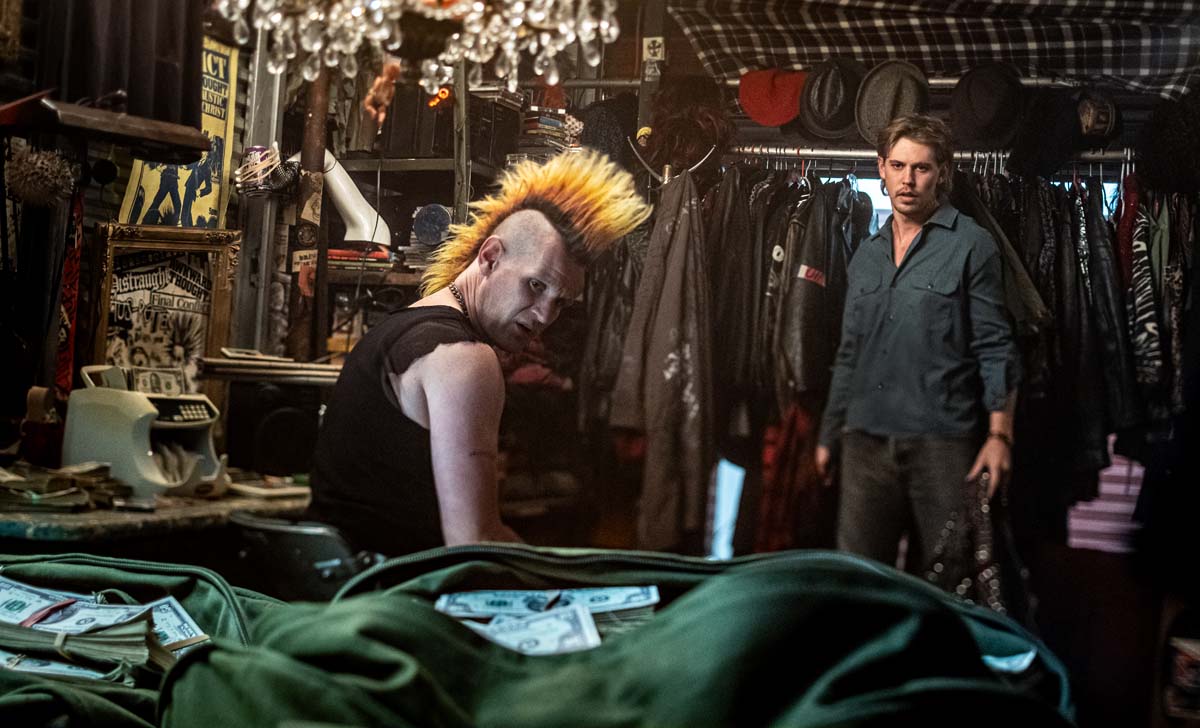
There was a lot of discussion and a lot of reworking of dialogue in those areas to make sure that we were more aligned with him than was originally written.
Like in the drinking binge scene, you know he has this key, and the thing that is clear in the way that it’s edited is that he can’t remember what happened with the key because he got drunk and it’s suddenly very important that he remembers.
But as structured, it was almost a problem because as an audience member, once you show an audience something, you show something happened.
You can’t then just have the main character forget that thing and then just sit there being ahead of them, waiting for them to remember, because then you’ve broken that connection.
I knew the tension was depleted because we were just waiting for him to catch up to what we already knew.
The film makes use of both dreams and flashbacks. Did you see those in the script and try to develop an approach, either visually or sonically? Or did you just wait for the dailies before formulating a plan?
We did have some discussions about it in the script, and we knew it was possible that we might play around with the pattern of how those flashbacks were used and what information was revealed.
Each time we went back to this flashback moment, we knew it was possible that we would spread it out over more beats or contain it to one, and we weren’t sure which way it was going to go.
We experimented with it, but in the end it was reasonably close to what was written. It didn’t really change the way we shot it. It was shot pretty much as its own self-contained scene, but it was modular in a way that we knew we could break it up, or there was a repeated pattern in it that wasn’t really part of the script that we added later.
And there’s a whole slow motion thing that happens that used to be earlier in the film that we moved to later, because it helped emphasize something else.
But it wasn’t discussed that much in advance, except that we knew this was a tool that we could play with and we wouldn’t really know how that information would unfurl or what would be the most impactful way to do that. Do we want to give all the information up front? Or do we want to reveal it after the fact?

I realized something which Darren didn’t even realize that he did. Subconsciously, there is a shot of a main character who’s been killed that’s presented in a certain way, grammatically, as a point of view shot of that person, and it relates, at least in terms of consequence and guilt to something in the flashback. There’s effectively a match cut in the film that was not planned.
Darren had staged and shot both those moments in almost identical framing, without realizing it until after the fact, and it was when I moved it and put it together. That was a very happy accident. You couldn’t have planned any other way.
We needed to find a way to communicate that idea so that the scene was less directly about exposition and more about an emotional state.
And sounds always a great way to do that? It was a great tool for us to expand the scene to be much, much more enveloping than it had been originally written.
It didn’t need to be that mechanically. It needed to be that emotionally. That was where that came from.
And did you try to start developing that sound in your picture cut, or did you have access to a sound team early?
Darren and I both adhere to the principle that we work with all our collaborators as early as logistics and time and availability permit, so I regularly provide my assembly - which Darren has had no input on - with both our sound designer, Craig Henighan, and our main composer, Rob Simonsen.
So they both watched the film in that form, understanding that it’s going to change dramatically, but at least they understand what the scenes are, what the footage is, what the intentions were - they start to wrap their heads around it.
And in the case of Craig, I regularly send him scenes as I’m assembling, and I’ll say, “You want to record anything for this while we still have production going on or guns or cars or whatever?” There’s always a dialogue going on during the shoot so that it’s well-rooted in the film.
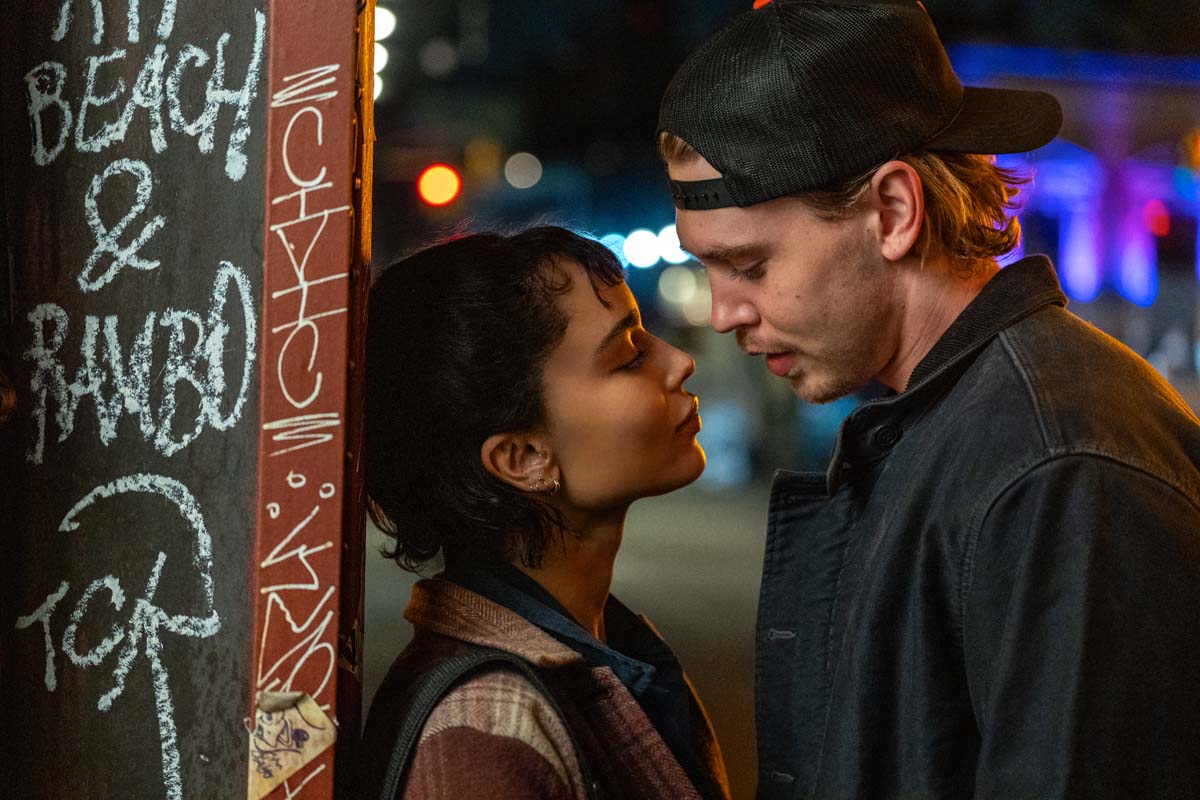
On this project - much less so on other films - it’s very realistic in terms of its aesthetic. It’s not overly impressionistic or design intensive.
That doesn’t mean there wasn’t a ton of work to do, but it’s not as subjective a thing. It’s just trying to create a reality - something that’s believable. I’m regularly giving him tracks and things to clean up, and he’s given me Foley before we’ve screened it to anybody.
I never cut with temp music, ever. Rob will start sketching right away. In this case, we worked with IDLES, the band. They had some songs for us originally.
That was Darren’s inspiration. He wanted some music participation from this band that he knew. We just thought their sound was right and that it would be an interesting way to inform the film and then merge that with IDLES performing the score so that it had a unique flavor to it. That was that process.
The IDLES songs were songs that you had from the beginning or not?
Yes, Darren knew IDLES. Joe was his main friend from the band, and he sent him the script, and asked them if he wanted to be a part of the process. They wrote 4 or 5 songs based on that. In the end I think it was six songs altogether that ended up in the movie.
And elements of them became the basis for certain score cues, so it was very closely integrated into the film.
Composer Rob Simonsen got in sync with all that stuff too and started writing things that kind of set their palate with some score supplements.
Ultimately it still had to feel like a score and still had to operate like a score. Rob would do a demo, then he would present that to IDLES, and we’d say to them, “Okay, with guitars and bass and drums and your keyboards, how would you do this?”
Then they would do their punk band version of whatever that swell was, or if it’s emotional or sound or whatever, and that became a real collaboration between them.
They also gave us a lot of stems and Rob would give us demos, and we work with our music editors, Nancy Allen and Andrew Silver on mapping out different score ideas.
So if Rob wrote a cue that was for a specific scene or moment or just a general idea, that’s a theme that he knew we would need.
We would take those stems and restructure them and place them in certain sequences so that it became a blueprint for Rob or IDLES to write something.
So there’s a chase in Chinatown. There was one song that came from the IDLES that we stripped down to stems and recut it so that it functioned like a score cue for this action sequence, then we did something similar with the cover of “Police and Thieves” that they had done.
Can you think of any places where you specifically thought we shouldn’t have music?
Yeah, but what we ended up with it. There is a sequence where it’s a bit of a torture sequence. They’re basically trying to get information out of somebody. There’s somebody actually already singing in the scene, so it doesn’t make sense. It’s a bit of a hat on a hat to put score on top of it, but we knew we needed the score before it and score after it, so the moment itself, without score, felt very bare.
So it was more of a kind of improvised sound design thing that was happening with the score that was more like connective tissue.
That was arrived at through a bit of a process, and when I say there was a process, at one point there was a suggestion that, we put a song in there. I reacted very negatively to it because I felt like it diminished the power of what was going on.
One of the things that was important to Darren and myself was that the movie has violence - as many of Darren’s movies do - but we were very careful that the violence is always consequential and not toned down because our main character is not a violent person and is not a martial arts expert or a trained assassin or John Wick. Not a knock on those films.
I could watch The Raid over and over again and marvel at all the technical and craft prowess and be totally immersed in that experience, but that was not this film. We would think of things like Marathon Man and Three Days of a Condor, where it’s an ordinary person in an extraordinary situation, and that every time someone gets injured or something happens, it’s consequential.
It’s not random extras getting shot in the background. We wanted to make sure that things had meaning. So when we put a punk song or a rock song on this torture sequence, it pulled away from the tension and made it feel less scary and less painful than it was for our main character, and I wanted to make sure we stayed with that main character.
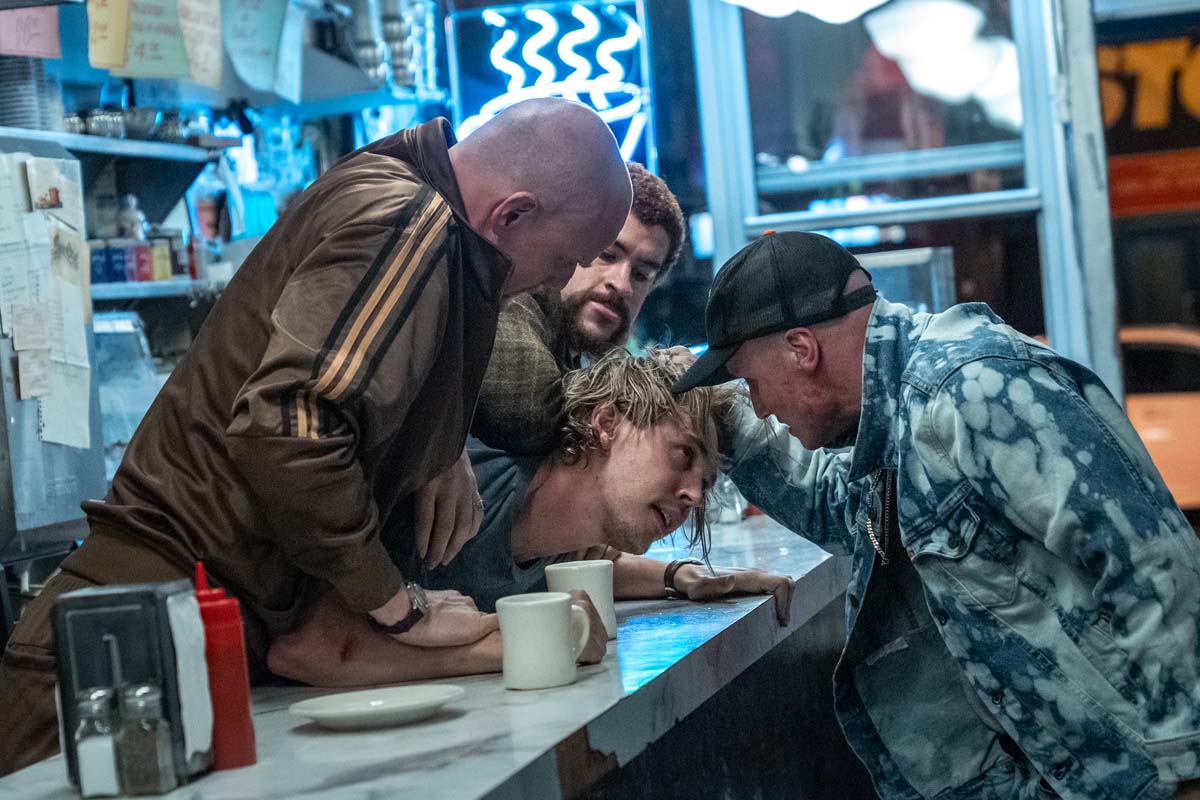
Let’s talk a little bit about dynamics. Whether it’s going from fast to slow or loud to quiet, how did you either enhance that or was all that stuff kind of built into the script?
We were always very conscious of pace and trying to make sure the movie was always on a roll, because it’s meant to be a lived experience for our main character, and that’s the kind of movie we were making. It only takes place over a few days and a lot happens, and we had to keep that barreling down the track.
It was in line with what I had mentioned to you originally: that we didn’t want the film to dwell too much in drama, or ever feel at all overly ponderous about the things that were heavy. We wanted to make sure we were moving through those things and not waiting on them.
If we could cut it down or could simplify it, we did. That was pretty much the case throughout. We were not precious about anything because we wanted the movie to have energy.
Is there anything that you want to talk about specifically with this film? Maybe the complexities of editing a specific scene or dealing with a specific issue?
You didn’t ask about the cat! That cat is an amazing cat. I knew when we first started shooting stuff with him that he was special and that he was going to be an important part of the thread of the movie and a certain access point to our character - how our main character opens up a little bit and changes a little bit through the movie.
The cat was written that way, but it was sort of a side thing. He became much more important in the movie, and we did a whole set of pickups, getting more shots of the cat in there, because we always wanted to make sure we cared about the cat and what was happening to the cat - to touch in with the cat - because we knew people lean forward when that you cut to that cat. It’s gold dust!
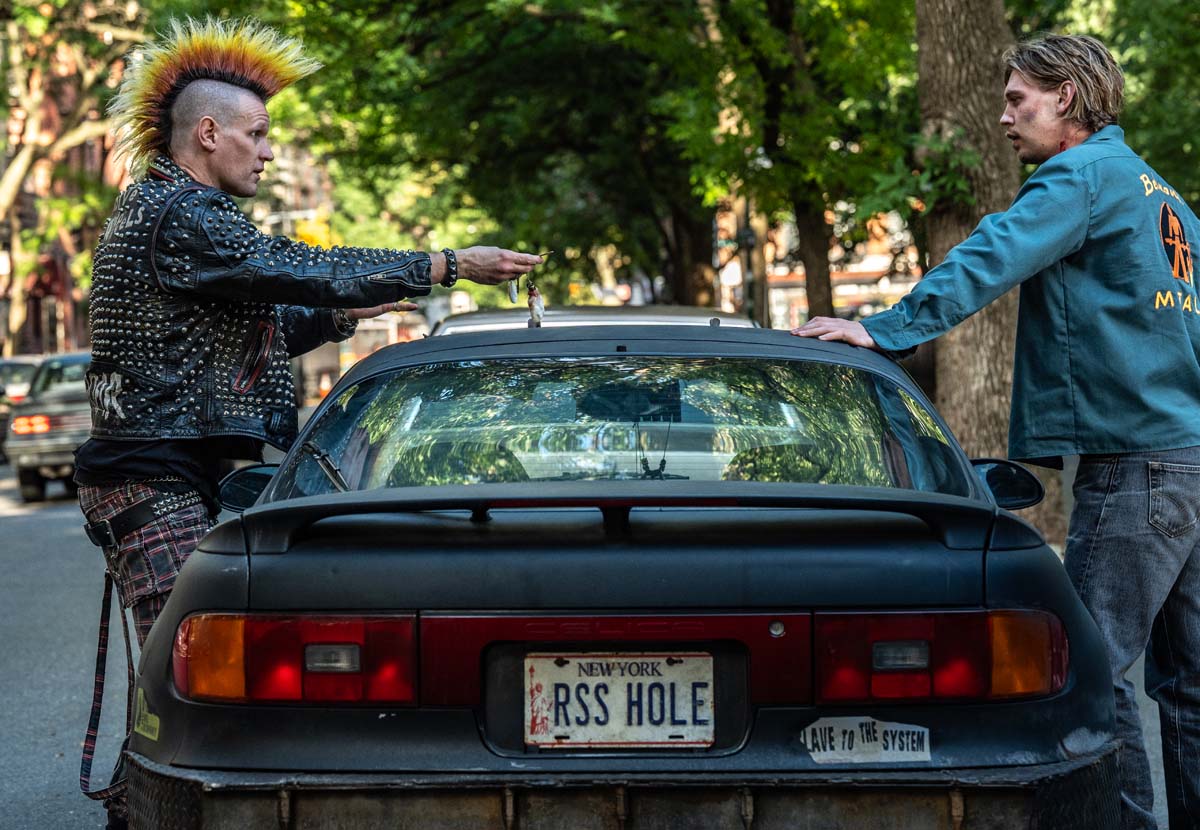
How did you come to those pickup shots? Is that something that you suggested? Is that something you and Darren were sitting in the edit going, you know what, this needs more cat shots?
I said that early on in the assembly. I said, “We need to make sure we have a shot of the cat whenever the cat should be around. Even though we didn’t film him, there needs to be a shot of him because it’s a buddy movie. He’s there the whole time and he’s important.
They come home from the hospital at one point and there was no cat there. I said, “They left the cat for two days. We have to show that the cat’s okay. There are going to be people in that audience who own cats. I’m a cat owner. They’re going to say, “Where’s the cat? Is the cat all right?
Who took care of the cat?” So you need to see that. And it turned into one of the funnier jokes of the movie to me, which is what’s on the food bowls.
Those bowls only appeared in one shot in the background. I noticed it and I said, “Dude, how do we not feature that? We’re gonna have to make a shot out of that.”
So we did. And it gets a huge reaction every time you show those bowls. There are a number of things like that and it’s so endearing. Also, the cat’s an extension of Russ. It was helpful with Ross as a character - who’s out of the movie until he comes back - like this violent breath of air.
The audience needs a way to feel complete with a film, right? They need to feel satisfaction. There’s a lovely, satisfactory scene at the end of the movie for our hero and the cat, but how long do you let that go on? How do you decide, “This is enough” that the audience will feel satisfied, but I haven’t milked it too long?
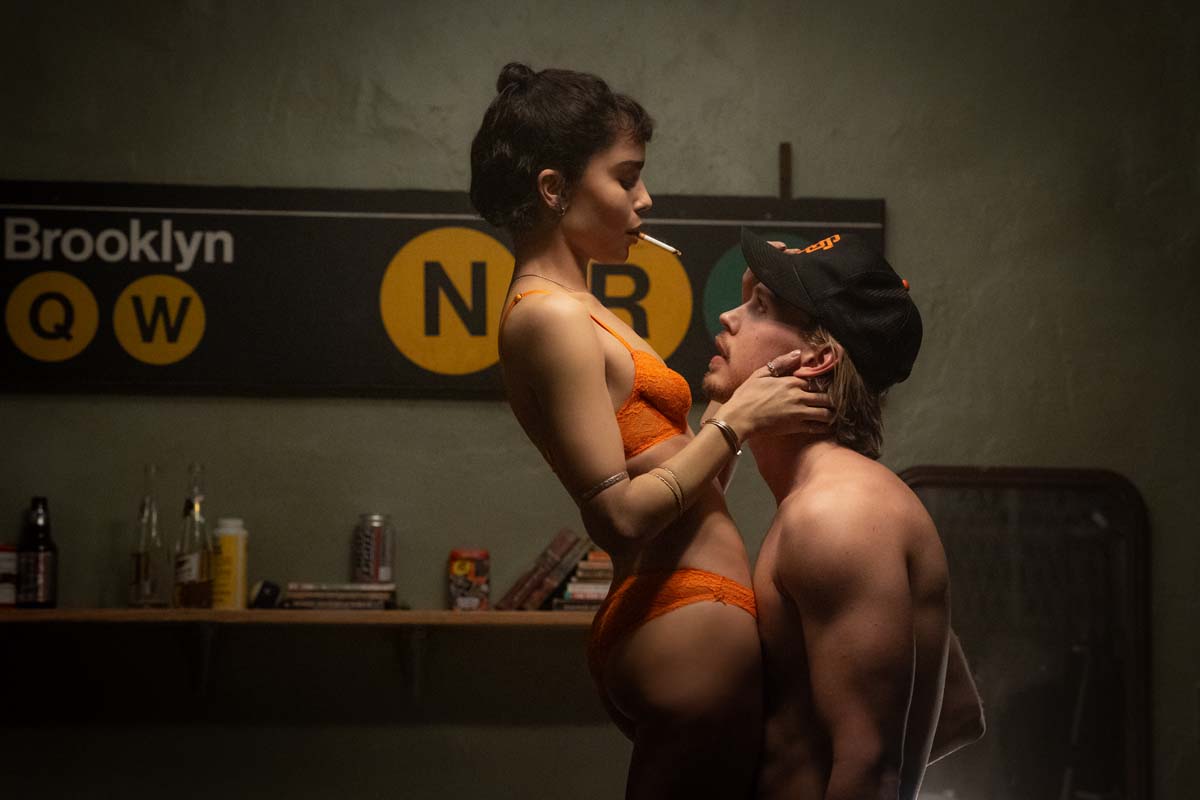
It’s a good question. There were a number of discussions about what we needed to resolve by the end of the movie, because this is a character that’s been through a lot, and a lot has gone on that if you look at it in the wrong angles, it’s not so happy.
His situation is definitely unresolved, but you need to feel some resolution even though there’s not a technical resolution to his plot. There is some emotional resolution.
And that’s sort of what we zeroed in on. There’s the whole thread of conversations with his mother and how that needed to be the focus point, because not only is it actually a positive development for him as a character, that it’s actual growth for him as a character.
The things we learn from that come those conversations and what we hear him say at the end of the film, but it’s also a resonance and a wrap up to what we learned from the second most important character.
So it kind of brings those two ideas together. So in looking at the ending, we wanted to make sure that it was just enough to feel like he’s closing a certain chapter and he’s going to be okay.
That doesn’t take that much. You want to “name that tune” in as few notes as possible. You want to keep it as simple as you can, because the more you drown it out with overemphasis or overexplanation or hitting the wrong note, then you’ve distracted from the main conclusion you want to get there, which is the idea that this character is going to be okay and that we feel good about where he’s going.
It’s all just about stripping away stuff, so that was the focus. There was definitely other material, other ways to do that, that you could make the ending less certain. There was a version of the ending that was less confident.
We strangely called it “The Graduate ending” which felt like “I don’t know what’s next.” But we knew in our hearts that that wasn’t satisfactory. And audiences, when we screened it for people, told us that that wasn’t going to work. It wasn’t enough growth.
It wasn’t that we needed to be happy-go-lucky. It was that we needed this character to have gone to another chapter, another place.
We needed to feel closure. And that’s all just a matter of emphasis and juxtaposition. Not so much pace, but more about just zeroing in on the key detail and stripping away anything that clouds that.
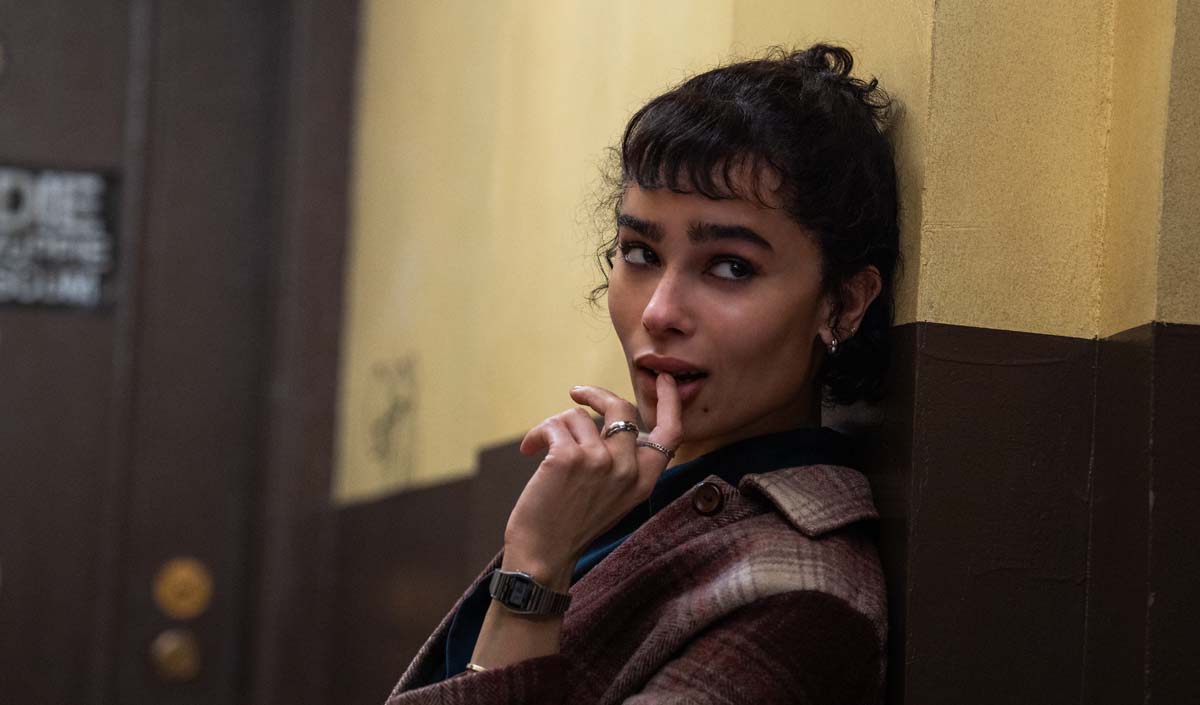
Aronofsky’s done some documentaries, which I did not realize until I went through both your and his IMDb. Have you worked on any of those? Have you worked on documentaries at all?
No, I haven’t, that’s something I haven’t done. I work with Darren and I work with Wes Anderson. Whenever I’m not doing their films, I’m always trying to do something that’s radically different, whether it’s tick, tick, Boom or what I’m working on now, I’m always trying to do something that’s a flexing a different muscle.
Documentaries are something I haven’t done. I’ve done things that have a certain verité style. If you look at The Wrestler, which was shot by people who worked in documentaries to try and capture that verisimilitude. I may be a little intimidated by that notion.
I’ve never actually been asked to work on a doc. Officially I’ve had conversations about it, but it’s a different kind of toolset. I don’t know.
Maybe I’d be great at it or I’d be terrible at it. What I do now as a storyteller, in fiction is instinctively I know the craft and I know the language, and I know the grammar of it, and I know how to create and calibrate certain moments.
And I don’t have that skill set for a documentary. If there was an opportunity where I could work with a documentary editor who does it and is good at it, that might be a different thing.
People get proprietary about editing. I’ve become less and less so, and I enjoy working with other editors because you always learn something when you see someone else put something together and you can build on it together.
I’ve had great fun collaborating with different editors, so maybe one day I’d get to work on a doc with somebody who knows that artform.
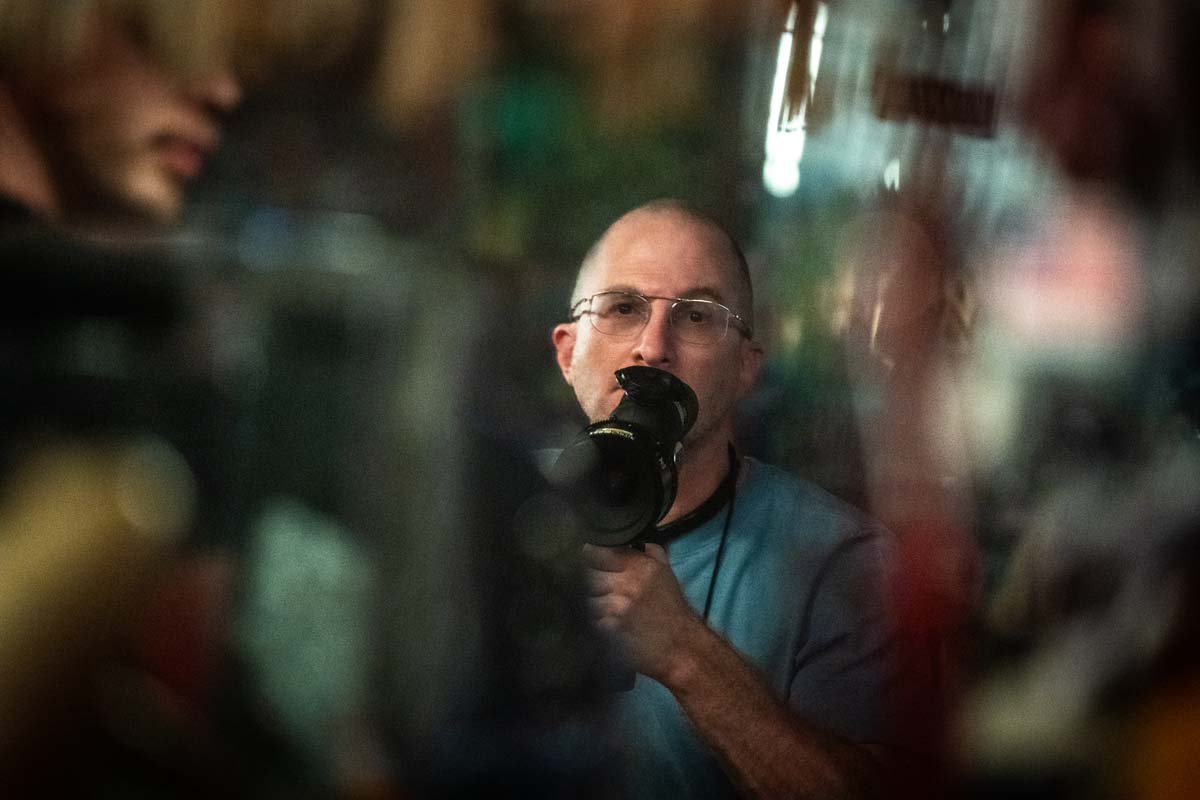
I was curious because Darren uses you constantly for narrative. Then he’s done a couple of documentaries and he uses documentary editors. Ron Howard does the same with his narrative and feature projects.
Darren tried to get me into the Sphere project. I was not available. That had staged or fiction elements to it, but it’s definitely it’s a mix. Darren has a lot of projects that he works on, but for features, thankfully we have our rapport and maybe someday I’ll do one of those other things with them. But for now, movies and TV shows are my thing.
You’ve got your hands full as it is.
I do. I have enough to do.
Thank you so much for joining me to talk about this film. I really enjoyed it.
Hopefully, people go out and enjoy this movie. I just think it’s a blast. I thought it was fun to work on. I think it’s fun to watch. It’s fun to watch with audiences. I hope people come out and see it. So thank you.








